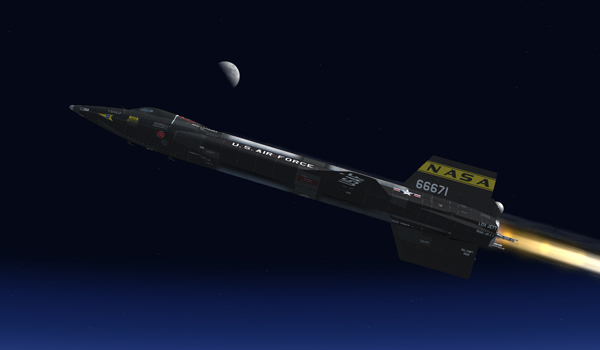
At the edge of space.
The X-15 has two control systems: The aerodynamic flight control system and the ballistic control system.
The aerodynamic flight control system consists of a mechanical system including hydraulically-actuated control surfaces for use at altitudes where these surfaces are effective for maneuvering the airplane.
The ballistic control system is used to control the airplane attitude at altitudes where the aerodynamic surfaces are relatively ineffective. The ballistic control system uses a monopropellant (H2O2) which is released through rockets at high velocity to rotate the airplane about its pitch, roll, and yaw axes as required for re-entry, and to correct oscillation.
Note: At the time of publication, ballistic control for rocket airplanes was still not supported in either Microsoft® Flight Simulator X or Lockheed Martin® Prepar3D®. Because aerodynamic control surfaces become less and less effective above about 125,000 feet in the simulator as dynamic pressure decreases, we recommend flying the X-15A-2 SE addon below 200,000 feet. Refer to "Ballistic Control System" for more details.
In this section:
Aerodynamic Flight Control System
Stability Augmentation System (SAS)
Alternate Stability Augmentation System (ASAS)
Ballistic Control System (BCS)
Reaction Augmentation System (RAS)